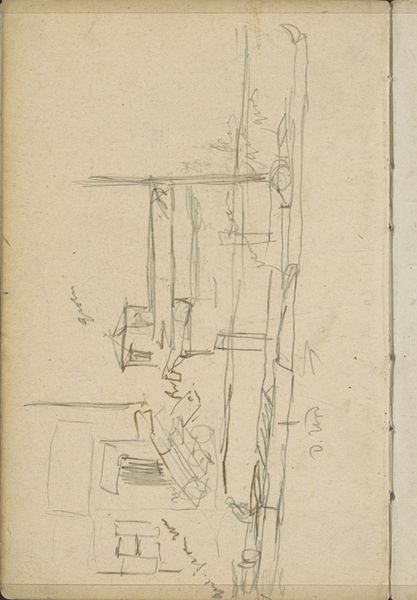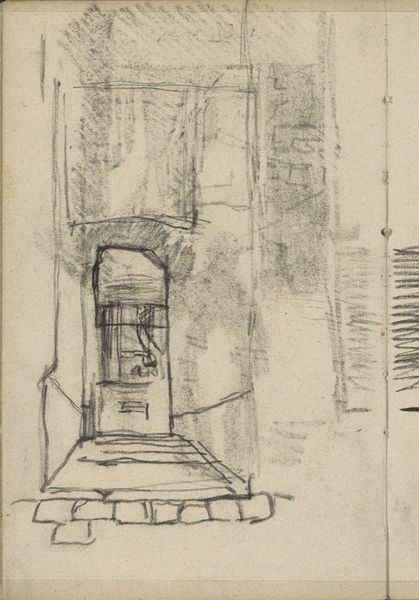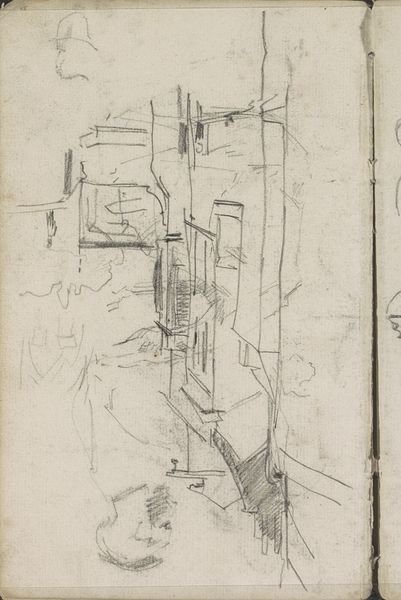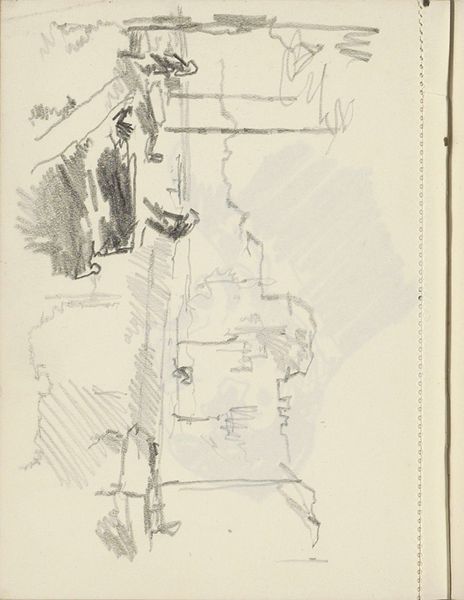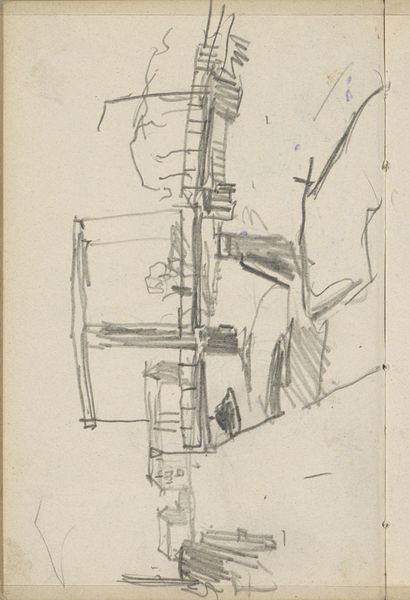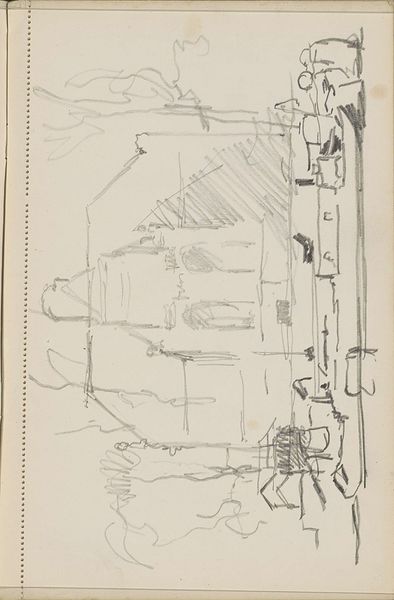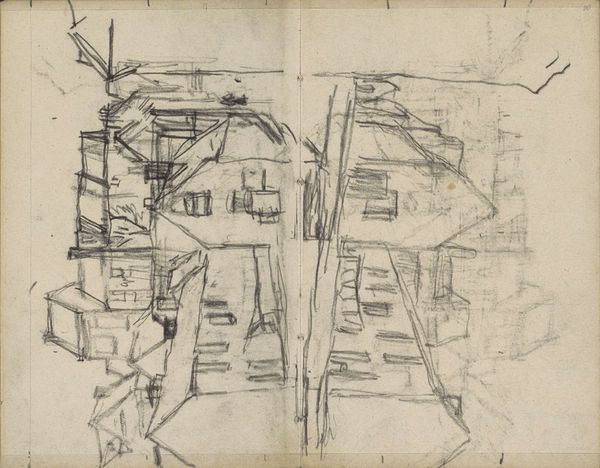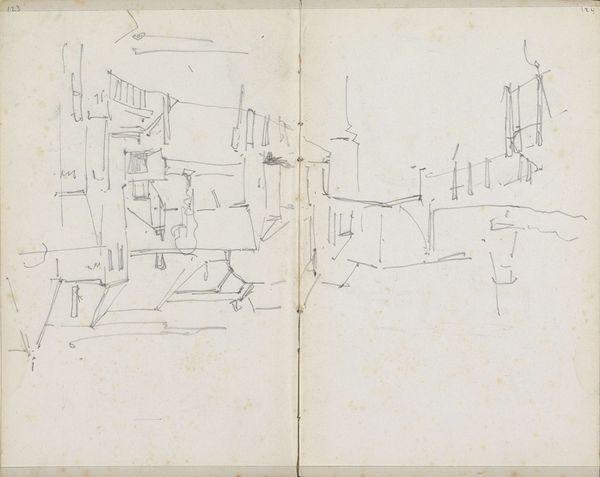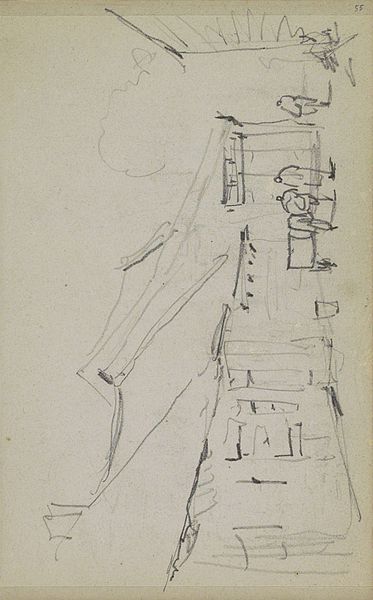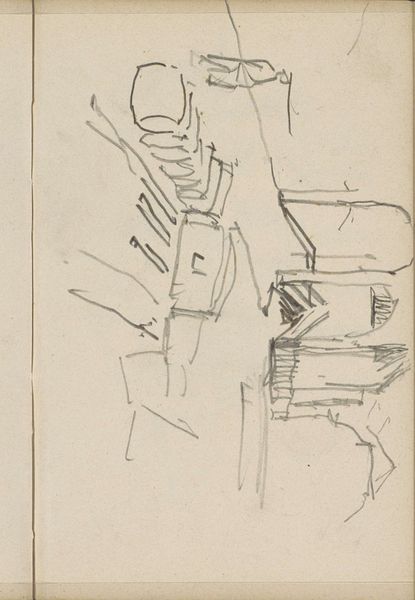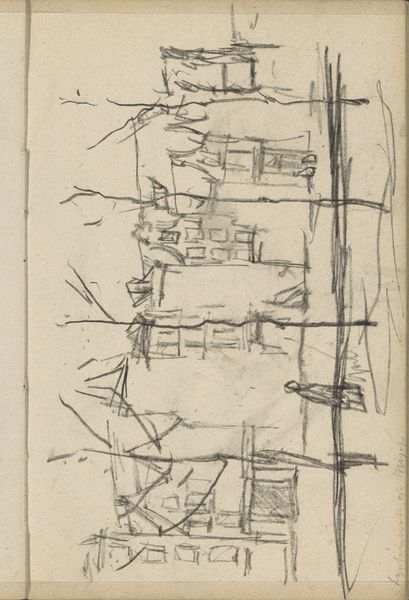
Copyright: Rijks Museum: Open Domain
Editor: We're looking at "Straat in Amsterdam, gezien door een poort," or "Street in Amsterdam, Seen Through a Gate" by George Hendrik Breitner, created sometime between 1886 and 1908 using pencil and graphite on paper. It's currently housed in the Rijksmuseum. I’m struck by how the sketch feels both intimate and distant, like a half-remembered dream of a city. What do you see in this piece? Curator: What I immediately see is a framing device—the gate—and that immediately cues our minds into the experience of viewing, of witnessing. Think about how often artists employ windows or doorways. What do those portals represent? Consider also the ephemerality of the medium—pencil on paper. Does this choice echo the transient nature of urban life itself, capturing a fleeting moment? Editor: That’s interesting. It almost feels like the gate itself is guarding something. Could the “something” be the past, preserved in memory? Curator: Precisely. The sketch quality invites a connection with the artist's own perceptual experience, his personal relationship to Amsterdam. The use of graphite lends the work a tonal quality, a sense of light and shadow playing across the scene. Think of light and shadow not just as illumination, but as revelation and concealment. Breitner worked in a time of rapid urbanization. How does the visual shorthand, the suggestive lines, speak to the experience of navigating that change? What is left out is just as important as what is included. What kind of a place is that? What is happening? Editor: I never thought about how the materials themselves contribute to the meaning. And you are so right, what is NOT in a work is equally important, because that prompts our mind to work even harder. Thanks. Curator: Exactly. That symbolic absence or shadow urges us to reflect on our own relationship with urban spaces, and their symbolic significance, past and present. The gate can be regarded not just as a literal entry but a portal of our memory. Editor: That makes me think differently about how we move through cities and how we see cities differently at different moments in time.
Comments
No comments
Be the first to comment and join the conversation on the ultimate creative platform.
